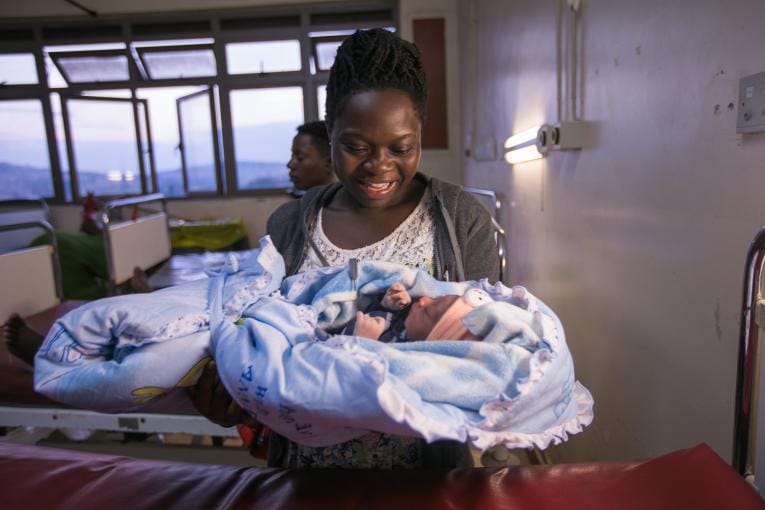
In 2020, The Government of Uganda will invest in infrastructure and human resource capacity to improve access and quality of services for women and children. UNICEF is calling for world leaders and nations to invest in health workers with the know-how and equipment to save every newborn
UNICEF estimates that 3916 babies were born in Uganda on New Year’s Day. Ugandan babies accounted for approximately one percent of the estimated 392,078 babies born worldwide on New Year’s Day.
“The beginning of a new year and a new decade is an opportunity to reflect on our hopes and aspirations not only for our future. but the future of those who will come after us,” said Henrietta Fore, UNICEF Executive Director. “As the calendar flips each January, we are reminded of all the possibility and potential of each child embarking on her or his life’s journey—if they are just given that chance.”
Each January, UNICEF celebrates babies born on New Year’s Day, an auspicious day for child birth around the world.
Over the past three decades, the world has seen remarkable progress in child survival, cutting the number of children worldwide who die before their fifth birthday by more than half. But there has been slower progress for newborns. Babies dying in the first month accounted for 47 percent of all deaths among children under five in 2018, up from 40 percent in 1990.
In Uganda, newborn deaths have stagnated at 27 deaths per 1,000 live births. The leading causes of newborn mortality are complications of prematurity, birth asphyxia, and severe infections, while one-third of under-five deaths is due to largely preventable or treatable conditions, such as malaria, pneumonia, and diarrhea.
Nevertheless, the country continues to make progress in overall child mortality reduction by investing in the delivery of essential and quality health services. Between 2011 and 2016 under-five mortality in Uganda reduced from 90 to 64 per 1,000 live births.
“The Government of Uganda has invested in ensuring child survival through community and facility-level interventions hence the reductions we see in child mortality. Additional efforts will focus on bringing services closer to our people through infrastructural development, including advanced care for all newborns by establishing special care units in Hospitals and Health Centre IVs,” said Dr. Jane Ruth Aceng, Minister of Health.
“The Ministry will also strengthen human resource availability and capacity to provide quality care for newborns especially the small and sick babies,” she added.
With the support of UNICEF and other partners, other evidence-based high impact interventions to improve access of mothers, newborns and children to timely and quality health care are being implemented across the country. The interventions include: ensuring availability of skilled, competent and motivated health workers through training and skills development, provision of essential equipment, commodities, and supplies including blood, installation of water, sanitation and hygiene facilities in health centers to prevent infections and a functional referral system for mothers and children with danger signs, especially those in hard to reach areas.
Globally, UNICEF’s Every Child Alive campaign calls for immediate investment in health workers with the right training, who are equipped with the right medicines to ensure every mother and newborn is cared for by a safe pair of hands to prevent and treat complications during pregnancy, delivery, and birth.
“Every year, every decade, the lives of millions of children are cut short. Even one life lost is far too many,” said Ms. Noreen Prendiville, Deputy Representative, UNICEF Uganda. “Together, we can change this. With affordable and simple health interventions we can ensure more babies survive to celebrate the first month of life and live into this decade.”
For the data, UNICEF worked with the World Data Lab. The estimates for the number of babies born on 1 January 2020 draw on the latest revision of the UN’s World Population Prospects (2019). Building on these datasets, World Data Lab’s (WDL) algorithm projects estimates of the number of births for each day by country.




